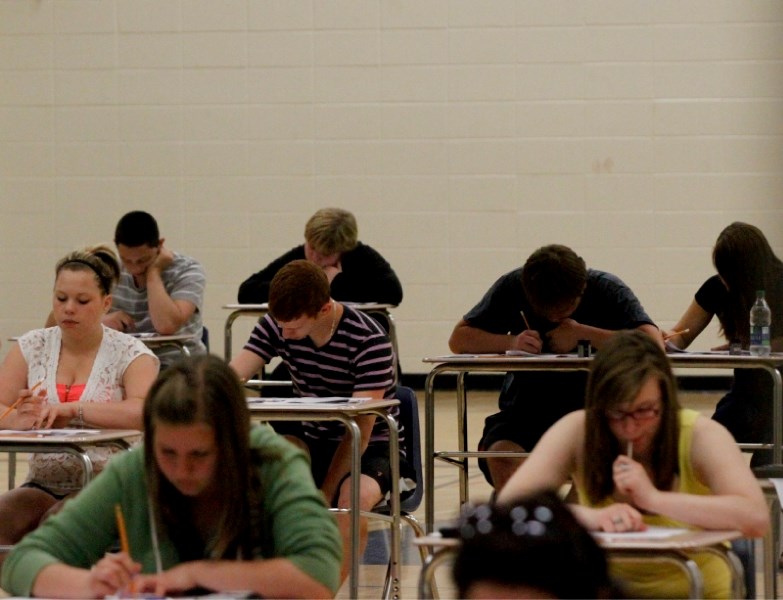The Fraser Institute released their latest rankings of Alberta high schools—and the results suggest that local schools need to improve their academic performance.
The not-for-profit Canadian research group compiles data from provincial test scores, grade-transition rates, graduation rates, and other key indicators and assigns each school in the province a rating out of 10. J.A. Williams High School in Lac La Biche and École Plamondon School received ratings of 2.8 and 3.8 respectively—considerably lower than the provincial average of 6.0—which placed them at 268th and 249th out of the 276 public, private, separate, and charter schools ranked in the province. Plamondon’s École Beauséjour was not listed.
JAWS principal Terry Moghrabi said that while he is concerned with academic performance, he noted the Fraser rankings doesn’t take into account the specific challenges—and improvements—affecting the school.
“We do take that information very seriously,” Moghrabi said. “But there are a lot of elements of growth going on at our high school that aren’t factored in.”
The Fraser report lists JAWS’ graduation rates for 2011 at 63.3 per cent, about 20 per cent lower than the provincial average. And the Lac La Biche school had a delayed advancement rate—passing from grade to grade—of 38.3 per cent, nearly twice the provincial average.
Moghrabi acknowledged the results, and said that there are unique challenges facing JAWS. Due to the booming oil and gas industry, some students have been lured away from high school to find work at construction and industry contractors—and smaller operations often don’t require a high school diploma to work.
“We’re competing against an industry that allows kids to leave without their high school diploma and still get high-paying jobs,” Moghrabi said. “We want every kid to graduate—that’s the ideal—but unfortunately it isn’t always the case.”
École Plamondon School fared a bit better than JAWS, exceeding the provincial average in both diploma completion and delayed advancement rate. But the Plamondon school’s rating of 3.8 is lower than their five-year average of 5.0, with exam marks five per cent lower and graduation rates 10 per cent lower than in 2007.
The idea of ranking schools by their academic performance is a controversial one. Indeed, École Plamondon School principal Morris Holota said that he didn’t look at the report—and he doesn’t intend to. Holota, like former education minister Thomas Lukaszuk, doesn’t put much merit in Fraser using provincial exam results to assign a school a rating.
“There are third parties that utilize that test for purposes for which the test was not intended,” Lukaszuk said in the legislature last November.
“It’s a form of misuse of information and, frankly, arriving at very questionable conclusions.”
But the Fraser Institute stands behind their reports. Michael Thomas, the Fraser Institute’s associate director of school performance studies, said the annual school rankings—which they also do for elementary schools—are an invaluable tool for both parents and educators who are concerned about making sure Alberta has the best education system possible.
“We want to arm parents with this report,” Thomas said told the Post. “A parent can put this in front of someone on the school board and say: ‘We need some answers.’ With this in front of them, it’s difficult for an administrator to say there’s no problem.”
And Thomas totally disagrees with Lukaszuk’s suggestion that Provincial Achievement Tests—the main exam the Fraser Institute uses to calculate the academic rating of a school—should be discontinued or changed in a way that would make it impossible to compare schools throughout the province.
Thomas pointed out that the reports tracks other data for each school, including the average parental income, the number of students enrolled, how many English as a Second Language students there are, and how many special needs students are at the school. With this extra information, Thomas said a lower-rated school could search for high-performing schools with similar enrolment and socioeconomic indicators—and then learn from those schools.
“I can’t think of another area where less public information is helpful,” Thomas said.
“Education is a huge investment and people have a right to know where their money is going. And as a parent, I’d want to know how a school is performing.”
And Moghrabi said he’s not discouraged by his school’s low rating. The principal said they are working towards engaging students to improve graduation rates—a key indicator of the success of a high school.
“We are carefully looking at the report,” Moghrabi said. “But I certainly know that we’re teaching the whole student, and not just for test scores.”
To view the complete Fraser Institute Report Card on Alberta’s High Schools 2012, go to www.compareschoolrankings.org.



